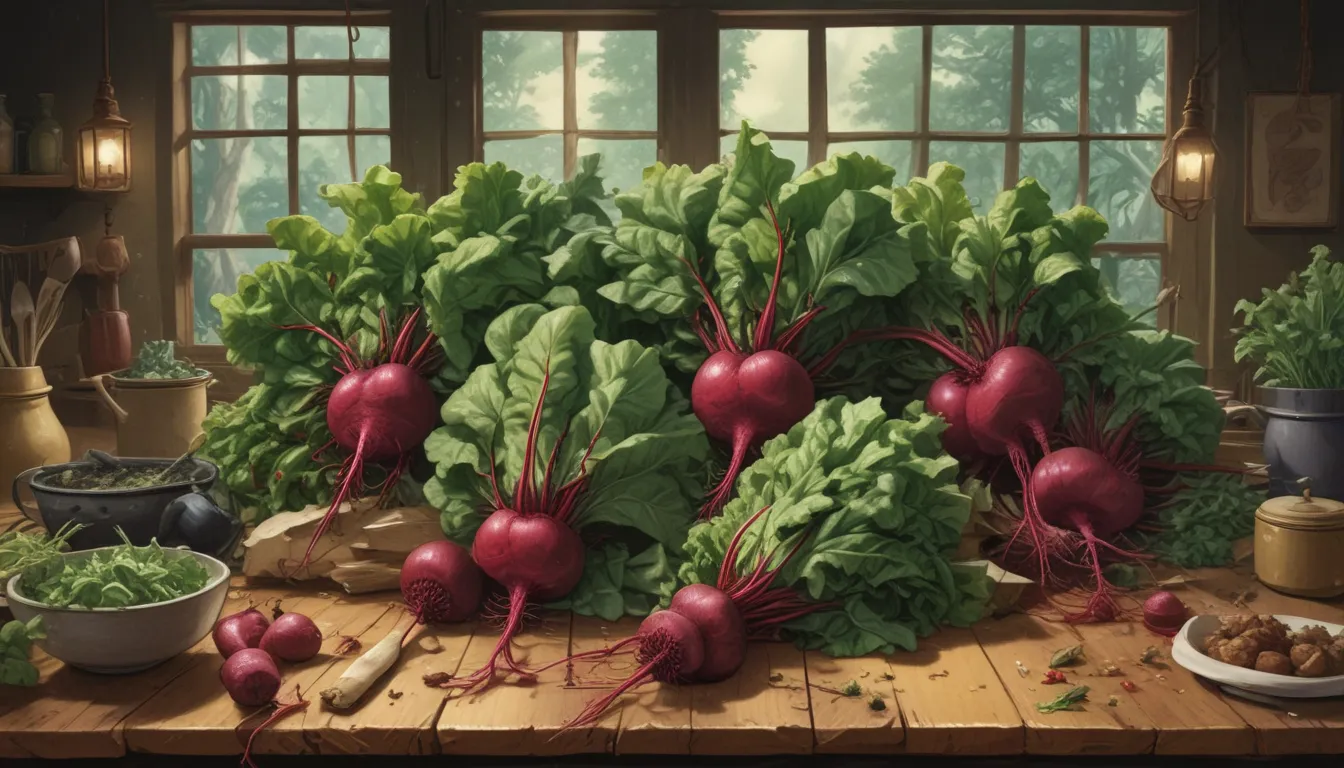The Ultimate Guide to Harvesting and Cooking Beet Greens

Are you tired of composting the beet greens that come with your fresh beets? Did you know that these leafy greens are not only tasty but also packed with essential nutrients like vitamin A and calcium? It’s time to stop wasting these nutritious leaves and start incorporating them into your meals.
In this comprehensive guide, I will walk you through the process of harvesting beet greens from your garden and using them in your kitchen. From understanding why you should harvest beet greens to practical tips on how to do it, this article has everything you need to make the most of this often overlooked vegetable.
Why Harvest Beet Greens
Beet greens and Swiss chard leaves may look similar, and that’s because they belong to the same species, Beta vulgaris. These leafy greens are not only delicious but also versatile in the kitchen. Depending on the variety of beets you are growing, you may have more or less foliage available for harvest.
Harvesting beet greens is a great way to reduce food waste and enjoy fresh greens straight from your garden. You can use these leafy tops in the same recipes that call for Swiss chard, adding a nutritious and flavorful twist to your meals.
Harvesting Beet Greens
While Thinning
After sowing your beet seeds, it’s essential to thin the seedlings to allow the remaining plants to grow properly. This thinning process also gives you the opportunity to start harvesting the young tops of your beets. According to experts from the Iowa State University Extension and Outreach, thinning seedlings when they are 3-4 inches tall and leaving them 3-4 inches apart is ideal.
To thin your seedlings, gently remove the smallest plants from the soil, leaving the strongest ones behind. You can then collect the thinned seedlings and use both the leaves and underdeveloped roots in your cooking.
From a Maturing Crop
You can continue to harvest beet greens throughout the growing season, but be mindful not to pick too many leaves as the plant needs them to continue growing and for the roots to mature. When the time comes to harvest your root crop, you can also trim the tops of the mature plants and use them in various recipes.
Be sure to cut the outer leaves with a sharp knife, leaving the inner leaves intact for future growth. This way, you can enjoy a continuous supply of fresh beet greens from your garden.
Cooking with Beet Greens
Now that you’ve harvested your beet greens, it’s time to start cooking with them. These versatile greens can be used in a variety of dishes, from salads to soups and stir-fries. You can easily replace spinach, kale, or Swiss chard with beet greens in your favorite recipes, adding a unique flavor and texture to your meals.
To get you inspired, here are some ideas for cooking with beet greens:
– Saute them with garlic and butter for a simple and flavorful side dish.
– Add them to soups and stews for an extra dose of nutrition.
– Use young leaves in salads to add color and freshness.
Experiment with different cooking methods and flavor combinations to discover your favorite way to enjoy beet greens in your meals.
Conclusion
Beet greens are not only delicious but also nutritious, making them a valuable addition to your garden and kitchen. By learning how to harvest and cook with beet greens, you can reduce food waste and enjoy fresh greens straight from your garden.
Next time you harvest fresh beets, don’t forget to save the greens and incorporate them into your meals. Whether you’re cooking a simple side dish or adding them to a hearty stew, beet greens can elevate the flavor and nutritional content of your dishes.
Are you ready to start harvesting and cooking with beet greens? Share your culinary plans and favorite recipes in the comments below. Enjoy your fresh greens straight from the garden!
For more gardening tips and ideas, check out these related articles:
– Leafy Greens for Salads and Sautees: How to Grow Spinach
– How to Grow Collard Greens, A Taste of Southern Culture
– Harvest Hearty Greens from the Garden: How to Grow Kale
Remember, the key to delicious meals is using fresh, high-quality ingredients like beet greens straight from your garden. Embrace the flavors of the season and enjoy the benefits of growing your own leafy greens. Happy harvesting and cooking!





